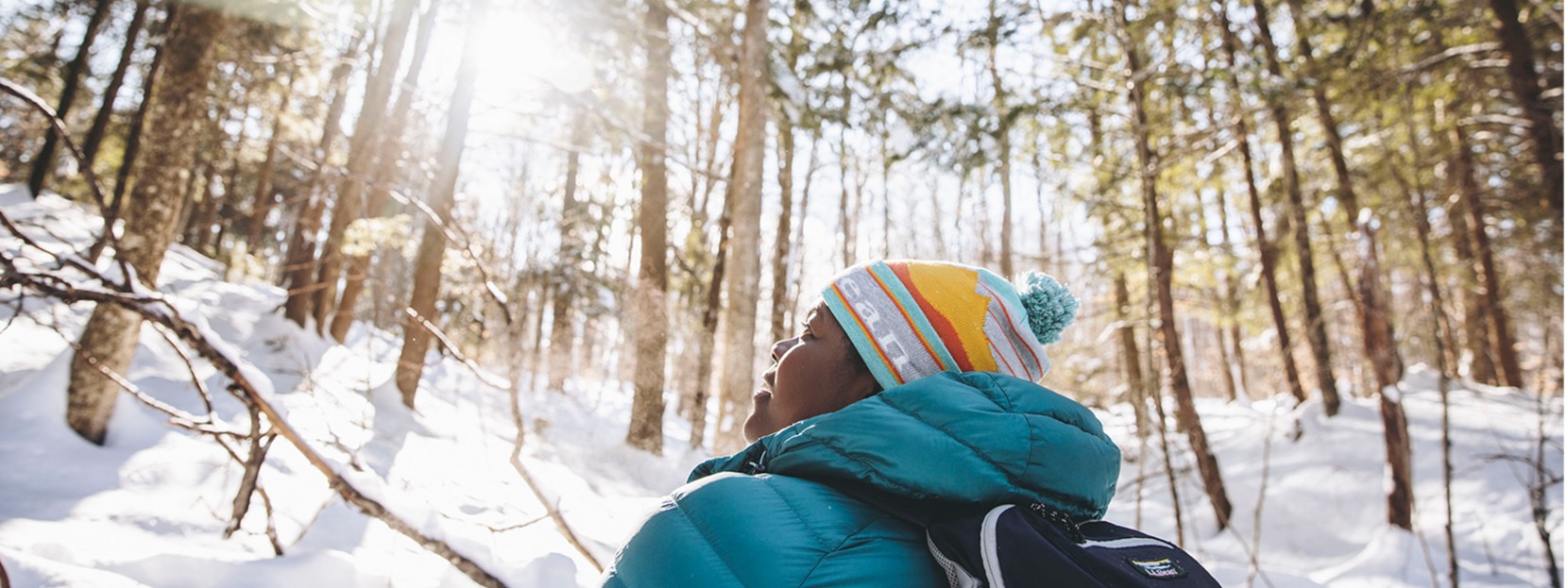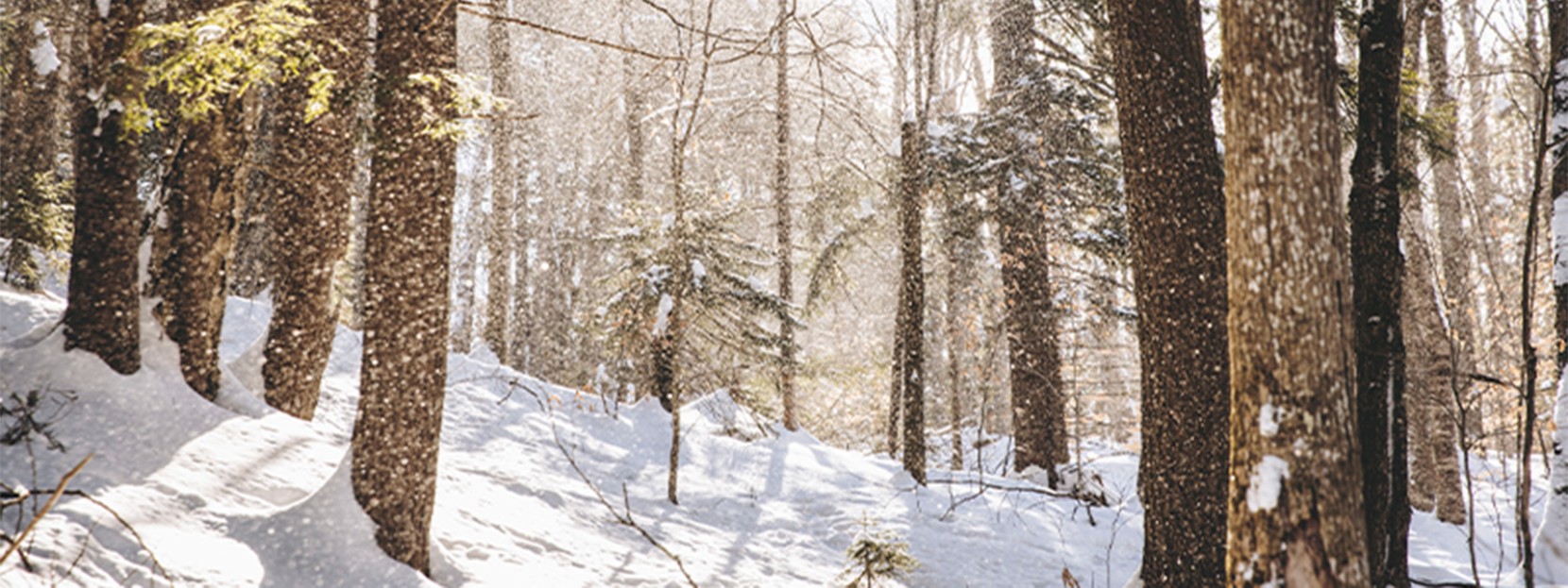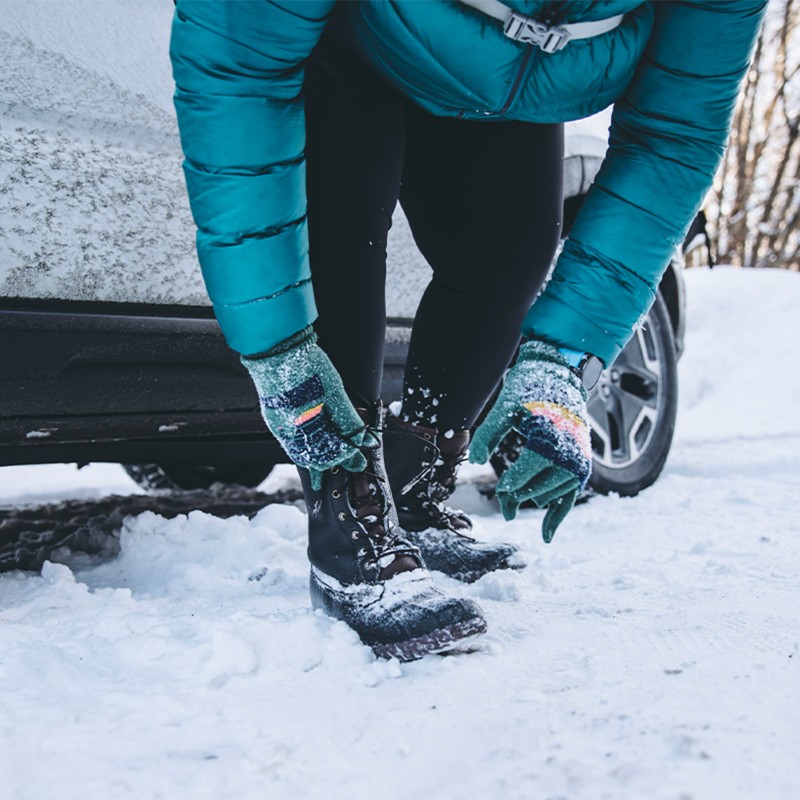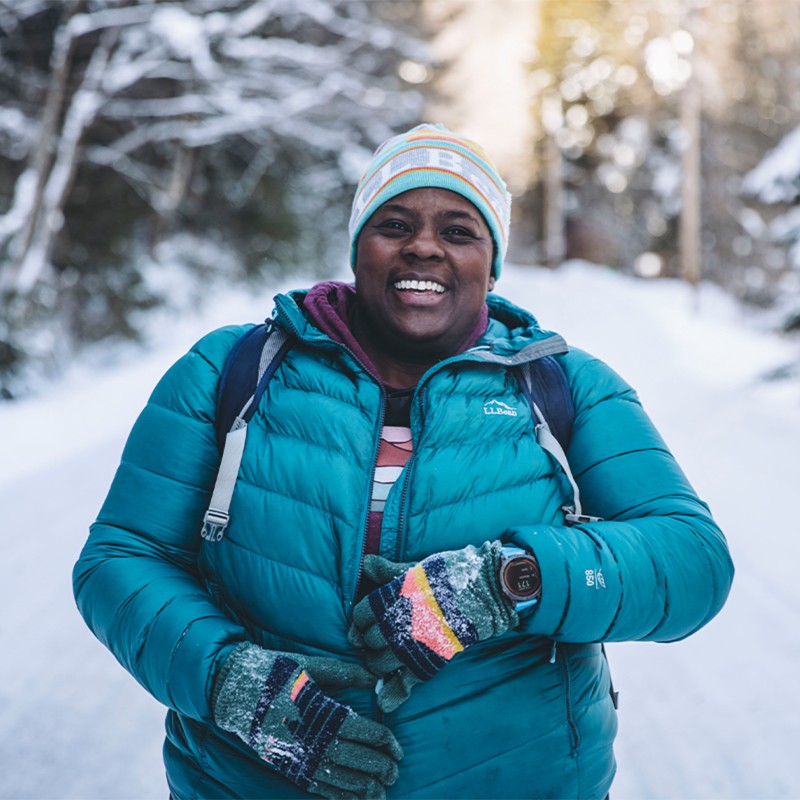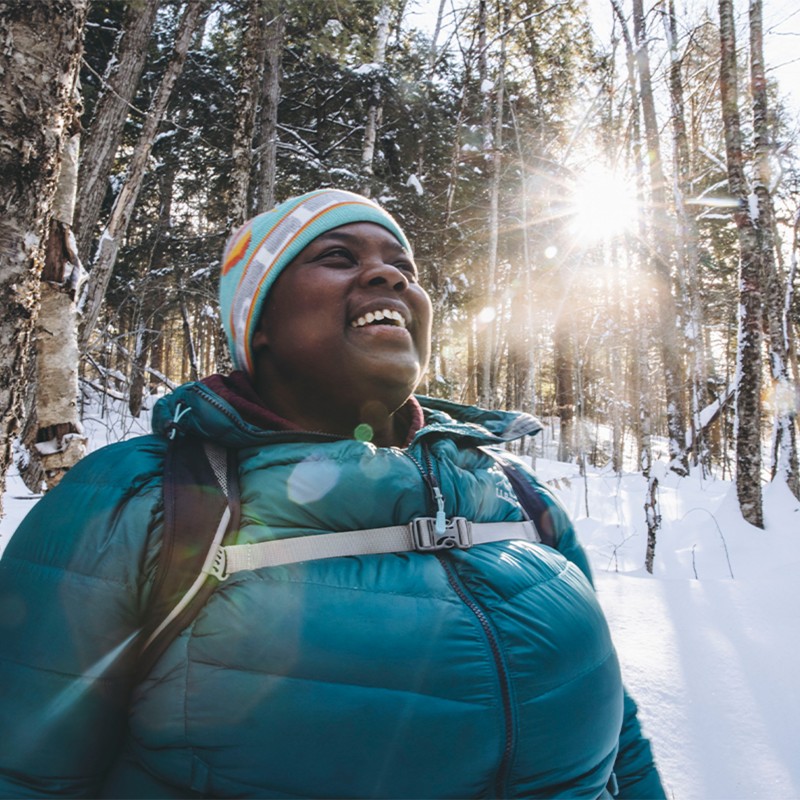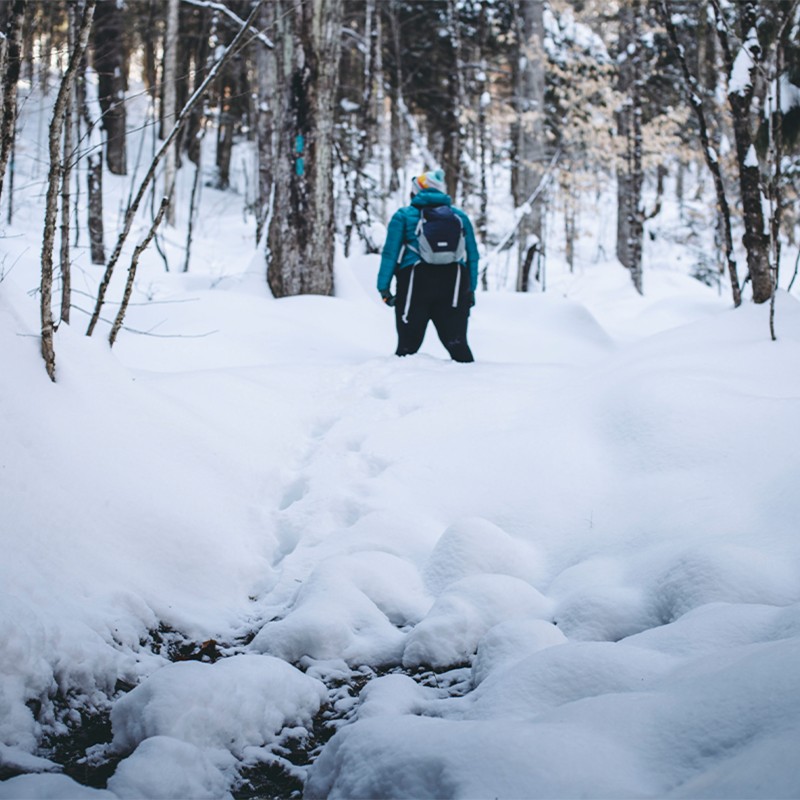Freeport, ME, February 8, 2023
A Dream Not Deferred
by L.L.Bean Brand Ambassador Mirna Valerio
17 Min. Read | Inside L.L.Bean | Current Stories
I am eight years old, returning from summer camp in the Catskills where I found new life in the middle of the forest. I had spent four weeks hiking trails surrounded by the biggest trees I had ever seen, learning to swim in a lake as dark brown as my skin, singing songs around a campfire and making new friends.
When I arrived home, I was the last to get off the bus. I took my time gathering all the things I had acquired at camp, because I wasn’t interested in rushing off the bus. It smelled a little moldy, like the kind of moldy that permeates everything you own after an extended time in the woods. I cherished that particular odor, and I still do. The now empty bus had been full of kids from the city and counselors from Ireland and England who had formed a tightly connected, loving summer community in the middle of a forest in upstate New York.
I didn’t want to leave that behind, especially now that we were home in the bustling, smelly-in-a-different kind of way city.
Stepping off that bus into the loving and expectant arms of my mom and stepfather would break that barrier, and I wasn’t ready. Who would sing camp songs with me? Who would watch the sky alongside me, like when we witnessed the Perseid meteor shower in the wee hours of an early August morning?
I find it fitting that I am reminiscing about my earliest encounters in the mountain-outdoors. I am writing in a cafe with expansive views of the Kendall Mountain in Silverton, Colorado. The streets are covered in snow and a group of moms with bundled up children are moving around with foot powered sleds. A motley crew of cross-country and backcountry skiers are sliding by on the street. The snow is falling. In fact, we are in the midst of a pretty major, days-long winter storm that will eventually close all the roads coming into town. Everything is quiet, restful even. People move in harmony with nature here because there is no other choice but to acquiesce.
There is a quiet energy and wisdom that the mountains bestow upon us, through their power and sheer grandeur. The soaring peaks give us the ability to feel small, insignificant even, and very much a part of the larger body of beings that inhabit this earth.
Have you ever pondered the majesty of a mountain? Or watched the morning sun rise, offering showstopping blues, purples, magentas, oranges and yellows? Have you sat on warm sand and listened to the lapping waves of saltwater, feeling your entire nervous system settle into the rhythm on the small waves crashing onto the beach, waterfowl flittering and flying about engaged in their daily routines? Have you witnessed a shooting star dart across the sky? Or watched plants grow on your window sill, and just try to imagine HOW IN THE HECK THIS HAPPENED, when you were just starting first grade?
This feeling — the inability to grasp the natural wonders around us — is part of the glue that connects us all to each other as human beings.
Contemporary psychologists like Dr. Paul Piff, have found that experiences with awe and wonder ignite areas in the brain that inspire compassion, social connection, generosity and community.
This makes so much sense to me.It is precisely what I experienced that summer decades ago at camp in the Catskills.
I felt such deep love, friendship and connection witnessing the otherworldly (and very worldly) occurrences with others in that magical setting. The campers there were like me, primarily black and Latinx, and from the five boroughs of New York City. For many of us, this was our first time away from home for more than a few days. For almost all of us, it was our first crack at spending uninterrupted time in the woods, in lakes, on grass.
I am no longer in touch with my bunkmates, we didn’t have cell phones back then and after a few months our mail-correspondence slowed down as our little elementary lives got back to normal. But I remember each of them clearly — smiling both inwardly and outwardly whenever I’m in the woods, which is nearly every day for me.
I remember the days running through heavy rain back to our bunks, or eating tacos for lunch at the mess hall, cleaning our bunk every Tuesday morning. I remember easy mornings when we could sleep in despite the wakeup bugle blaring in our ears. I remember holding hands with other kids so that we would feel safe in the big expanse of a dark night. I remember placing our sleeping bags close together to stay warm when we slept by the lake en plein air. I remember my friends and me waking up to the enticing scent of eggs, bacon and toast with butter and jelly, scoffing at the tropical punch Kool-Aid made with lake water we were offered. (We drank it anyway.) We stretched out and simply watched the lake, thinking it was probably a dumb thing to do, but what did we know?
I know now.
"I wanted everyone to experience their blood pressure dropping, their senses attuning and their nervous systems calming, their hearts opening. I wanted folks to experience what I had experienced at camp almost four decades ago."
A few years ago, I impulsively made the decision to move to Vermont. After 18 years of teaching, I spent a week winter-adventuring with a good friend and decided at the end of those seven days that I absolutely and immediately needed to live there. Was it the mountains? Yes. The snow? Yes. The early morning runners on a six-degree day? Yes. The ability to hop on a gnarly trail without having to drive at all? Yes. The maple syrup and cheese? Yes, and yes.
As I became a part of the community in Montpelier, shopping the farmers market on the weekends and ingratiating myself with the outdoor community, I fell deeply in love with a place whose gray skies in winter often turned people off.
When I wasn’t home in Vermont, I was traveling to beautiful outdoor spaces, like the Rocky Mountains in Colorado and Wyoming, the Sierra in California, the deserts of Utah and Arizona, the Copper Canyon in Mexico, the salty surf in Costa Rica and the extraordinary and varying landscapes of Kenya. These places gave me a stream of experiences to draw upon for inspiration, connection to nature and to my most human self and others.
I had the opportunity to immerse myself in the splendors of the earth — the colors of the land, the unique textures beneath my feet, the dry air of the desert or the milky blue of the Indian ocean. I have taken in what the Ancient Greeks called psithurism (wind through the trees and leaves), petrichor (that unique smell that emanates from the earth after rain), and what the Japanese call komorebi (the sunlight streaming through the trees and leaves.)
But whenever I returned to Vermont, I immediately felt like I was home, surrounded by quiet, dark woods and big, old mountains with granite faces and rooty, technical trails crisscrossing over them.
Every time my eight-year-old nephew comes to visit me from Brooklyn, he is home too. His face lights up as soon as he steps down off the Amtrak train. He sits in the back of my car, rolls the window down, throws his head back with a big smile, inhaling the iconic and humid Vermont air. All of us deserve to experience this — the beauty of nature, and the attendant mental, emotional and physical benefits of being outside.
As Vermont became the place I chose to settle down, work and become immersed, I started dreaming and plotting. I loved this place deeply and I wanted to share it in a special way. I wanted everyone to experience their blood pressure dropping, their senses attuning and their nervous systems calming, their hearts opening. I wanted folks to experience what I had experienced at camp almost four decades ago.
So, I started searching for a property where I could host people, those who don’t get to do what I do every day or have regular access to the outdoors. People in my varied communities.
It could be a place that folks would want to return to for rest, repose and recovery. They would experience the outdoors in all seasons, even during the “stick” ones, when the leaves have fallen from the trees but snow hasn’t yet come. They could hike, ride bikes, sit on a deck and watch the deer prance around or an occasional, curious bear amble about. They might take a walk on the boardwalk around the wetlands and observe various waterfowl flit about as they return to their summer home. Visitors could sit and breathe in the Vermont air.
I began searching for real estate, keeping an eye out for land that is accessible in the winter months. I looked for water — a pond, a stream, even a spring. I wanted lots of trees (of which Vermont has no shortage.) I wanted a little elevation, and space to build trails.
A property caught my eye while browsing listings on a lazy Sunday morning. It was green and thickly forested, with a stream running through part of it, and land sloped just enough to pique my trail-running legs’ interest. I met the seller’s agent and explored the property with a reporter who had been shadowing me and my “influencer lifestyle.”
It was cloudy and misty that day, and the sky threatened to release a downpour onto us. We sank into mud at the bottom edge of the property, but as we climbed further up, the soil became drier and loamier. There were ferns and all kinds of fungi everywhere. Towering white pines filled every single space that hadn’t been taken over by blowdowns and ferns. It all smelled so good. The swiftly moving water in the rocky stream below was the perfect soundtrack for our short hike into the center of the property. It opened a bit as we climbed, and I spun myself around to get a 360-degree view of what might just be the place — the one.
I wondered aloud what it looked like when it was sunny.
Then, the sun came out that very moment, and illuminated everything, all at once — it was like a snow globe, but greener and denser. Every shade of green was represented, from the dark green of the pine needles to the light florescent green of late summer ostrich ferns.
This space spoke to me deeply. I envisioned myself here, ascending still-uncut trails. I imagined bringing my family and friends here so they too could experience this bounty of green, of komorebi, sunlight streaming through the trees. I imagined my nephew bending down, scooping the soil in his hands, allowing the dirt to filter through his fingers. I imagined him closing his eyes and smiling. I envisioned people in my community arriving, maybe a bit harried and a little circumspect, but gradually calming, slowing and resting. In my mind, I saw them walking, running or even skinning up the trails, rejoicing in their bodies moving outside in all seasons.
I dreamed of a beautifully designed lodge with comfortable spaces, designed with an aesthetic that embraced many cultures and tastes. I pictured a menu that catered to all sorts of eating preferences, but that abandoned toxic diet culture in favor of nourishing folks in mind, body, spirit, movement and rest.
I saw a space where the lines between outside and inside were blurred.
I also wanted a space that paid due respect to the earth and her indigenous inhabitants while welcoming others whose ancestry and/or identities have been systematically decimated and disenfranchised. A place that would be an outside home for many, where they could reconnect with nature in their own ways, at their own pace.
I wanted a space where we could forest bathe, in the style of the Japanese, and a space where folks could garden if they wanted to, or walk gently in and around a labyrinth, barefoot. It would be a space in which we experience the things that only being deeply connected to the outdoors offers, including a deeper connection to and knowledge of self, and of others.
At just under 24 acres, the property isn’t huge. But it is expansive enough to warrant the meandering trails I built on it. When planning the trails, the builder asked if I wanted them to “Go somewhere or to be the destination.”
“Oh, the trails are definitely the destination,” I said. “They should be experiential.” This whole place will be an experience for the folks who need it, in fact.
Now, there are gorgeous, windy trails with several bridges over beautiful streams and angular drainages. There is a lovely spot that is home to switchbacks, a little corner with a bunch of short, young pines and a spread of clearwater-filled, undisturbed wetlands dotted by moss-covered boulders. There is even a place for an idyllic, comfortable lodge.
I couldn’t ask for a better space as the setting, background, theme and narrative arc of my dream.
Here is where I continue what I started that summer in the Catskills. A place where I can give back to my community, uplifting them and providing a space for vibrant music, art, good food and joyful human movement in nature.
"It would be a space in which we experience the things that only being deeply connected to the outdoors offers, including a deeper connection to and knowledge of self, and of others."
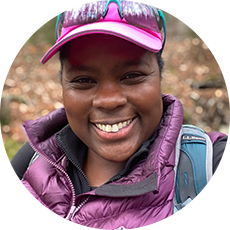
Mirna Valerio is a bestselling author, speaker, ultramarathon runner and mom who is challenging the perceptions of what fitness looks like – simply by putting her head down and kicking up dust on the trail.
Follow her adventures at @themirnavator




